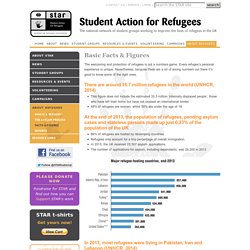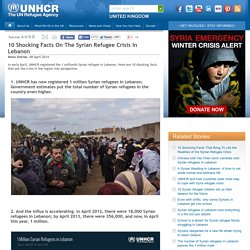

Simple%20Acts%20Refugee%20Week%20History%20and%20Heritage%20Quiz.pdf. Migration Statistics - Commons Library Standard Note. Interactive timeline: our long history of helping refugees. We provided overseas refugees from Thessaloniki and Crete with food.

Here is a report about the war from 1897. ©BRC We provided food, clothing, medical equipment and disinfectant for refugees, and trained many nurses who worked with them. This photo from 1913 shows nurses on a training parad We operated camps for displaced people, provided medical care and helped put them back in contact with their families. We arranged for the transportation, reception, accommodation and welfare of 7,500 Hungarian refugees coming to the UK. Our volunteers arranged transport to reception centres for refugees arriving in the UK and distributed comfort bags.
In 1979, our overseas branch in Hong Kong began running a camp for 15,500 Vietnamese refugees. We helped refugees to the UK register with doctors, enrol their children in school, learn English and reunite with their families. We sent 55 delegates to help in the region. Refugee Week has been held annually since 1998. Do something simple for refugees. Do something simple for refugees. In pictures: Refugee stories. Basic Facts & Figures.
The welcoming and protection of refugees is not a numbers game.

Every refugee’s personal experience is unique. Nevertheless, because there are a lot of wrong numbers out there it’s good to know some of the right ones. There are around 16.7 million refugees in the world (UNHCR, 2014) This figure does not include the estimated 33.3 million ‘internally displaced people’, those who have left their home but have not crossed an international border. 49% of refugees are women, whilst 50% are under the age of 18. At the end of 2013, the population of refugees, pending asylum cases and stateless persons made up just 0.23% of the population of the UK 86% of refugees are hosted by developing countries. In 2013, most refugees were living in Pakistan, Iran and Lebanon (UNHCR, 2014) Countries like Jordan, Turkey, Kenya, Chad, Ethiopia, China and the USA also host high refugee populations.
The refugee crisis in Syria is “the great tragedy of this century”, says UNHCR Further Information. Immigration statistics, July to September 2014. Migration Museum. No cookies? Positive Images. The Positive Images toolkit is an educational resource for teachers, youth workers and other educators to teach young people about migration and development.

The toolkit includes ten innovative educational activities for young people aged 12 and over. It also includes a wealth of activities and case studies of actions, enabling young people through their community to make a difference to global issues. The toolkit incorporates four short films based on the stories of contemporary migrants and supporting powerpoint presentations. Complete toolkit Download the complete Positive Images toolkit here or download individual sections of the resource below. Complete Positive Images toolkit (PDF)Complete Positive Images toolkit (Microsoft Word)Complete Positive Images toolkit (Microsoft Powerpoint) Introduction and how to use the toolkit Introduction and outline of the toolkit aims and structure. Introduction and outine (PDF)Introduction and outline (Microsoft Word) What do I need to consider?
10 Shocking Facts On The Syrian Refugee Crisis In Lebanon. News Stories, 08 April 2014 In early April, UNHCR registered the 1 millionth Syrian refugee in Lebanon.

Here are 10 shocking facts that put the crisis in the region into perspective. 1. UNHCR has now registered 1 million Syrian refugees in Lebanon. Government estimates put the total number of Syrian refugees in the country even higher. 2. 3. 4. 60% of Syrian children in Lebanon are not in school. 5. FaviannaRodriguez_InternationalMigrantsDay.jpg (JPEG Image, 1496 × 1113 pixels) - Scaled (68%) Legospot.jpg (JPEG Image, 750 × 1010 pixels) - Scaled (99%) Poster_international_migrants_day.jpg (JPEG Image, 1600 × 1035 pixels) - Scaled (64%)
Migration_is_not_a_crime_stencil-2555px1.png (PNG Image, 1036 × 1600 pixels) - Scaled (62%)